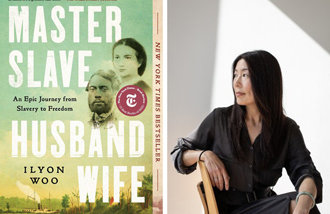Taekkyon: Gently and Lightly

Taekkyon moves are soft and curved. Taekkyon players bend their knees and bodies like the branches of a willow. Simply watching someone performing the traditional Korean martial art gives you a pleasurable feeling, as they move their body left and right, and their shoulders up and down. It appears to be a dance to Koreas traditional farm music, but in an instant it changes into a cheerful mask dance. One cannot find furious and deadly moves in Taekkyon, as in every move lies a hidden cushioning action. Taekkyon kicks are not aimed straight at the opponent. They curve like a crescent, in contrast to Taekwondo kicks that are straight and abrupt.
Neun attacks are characteristic of Taekkyon. Neun (meaning soft and slow in Korean) attacks knock the opponent to the ground without hurting them, for which advanced power control skills are essential. Taekkyon does not allow the attacking of vulnerable parts of the body. Rather, the forehead, sides, thighs and shoulders are the targets, as the principle is to attack the opponents hard and safe body parts using ones own soft body parts. For example, Anugeori trips the opponent by hitting their ankle bone with the soft sole of the foot, and Gyeotchigi impacts the opponents cheeks, shoulders or thighs with the sole of the foot. Straight kicks with no bending and cushioning are a foul in Taekkyon. All Taekkyon moves are based on Neun attacks. Novice kicks impact the opponents legs and intermediate kicks impact the opponents shoulders. However, master kicks can tip the opponents hat to the ground. A Taekkyon player wins when part of the opponents body (above the knee) comes in contact with the ground. A player is also victorious when he pushes the opponent more than two steps with a two-foot kick, or knocks the opponent off balance with a kick aimed at the opponents neck or head. Taekkyons charm is revealed in matches, where players fight but do not hurt each other. Punches and kicks carry an unusually caring touch. When a match is over, players exchange friendly and encouraging remarks. After all, the purpose of the match is to find out who is the better player. Matches are usually a part of village festivities. This is why Taekkyon, along with Ssireum traditional Korean wrestling were so popular during the spring festival.
Among Taekkyon practitioners, families and women make up a significantly high percentage. Many grandmothers over sixty years of age enjoy the sport in local sports clubs, which in itself is tribute to the softness and fluidity of Taekkyon movements. Lim Mi-young, a 34 year old 4th Dan (the highest level) who runs a Taekkyon school in Bucheon, said, Anyone, even seniors, can see their movements softening with continuous practice. As the bending action in the sport stimulates growth plates, it can make children grow tall. (Bucheon Jeonsugwan Taekkyon School phone number: 032-3232-666) Park Eun-hye, a fifteen year-old student and last years second-place winner at the womens Taekkyon Championships (2nd Dan, 1st Poom, Incheon Chungchun Womens Junior High) said that she can sweat away any stress with just a little bit of Taekkyon. The 166 centimeter Park, once a small girl, attributes her growth to the traditional Korean sport. A Yoga-teaching married couple, Jeong Geon (34) and Choi Ha-ran (30), both 3rd Poom, practice Taekkyon with each other regularly. Choi described Taekkyon as dynamic, as opposed to Yoga being static. She said she can develop agility and nimbleness through the sport, which does not overstrain joints and whose fluid kicks can only be described as splendid. Often witnessed are fathers and their son practicing Taekkyon together. One such example is Kwon Soon-hong, a 43 year-old teacher (3rd Poom), and his son Yong-hwan (5th Poom). Senior Kwon believes that the best parts of the sport for him are its de-stressing effects and the joy of working up a sweat and talking with his son while practicing. Junior Kwon smiled saying he sometimes corrects his fathers posture. It has been only a month since Kang Jeon-hee, a 40-year-old teacher, practiced with his two sons, Chang-moo (7) and Seung-moo (5). Kang said, Taekkyon is a soft sport for all and is great exercise. In addition, children can learn about national traditions. Ryu In-gab (8th Poom), a 54-year-old self-employed businessman, who underwent surgery for intestinal cancer six months ago, was charmed by the unique appeal two months ago. Beaming brightly, he said he no longer has indigestion problems and fatigue, and has greatly improved his flexibility.
Taekkyon is fun. It is both a martial art and a dance at the same time. Kicks are not intended to cause harm and it requires no protective gear. Instead, it requires self-restraint and consideration of others, which is the reason why players should be flexible and not rigid, both physically and mentally. Players should soften themselves by continuously moving their bodies. If the basis of all martial arts is said to lie in kicks, then Taekkyon kicks are some of the most special. A practitioner moves in the form of a triangle and an inverted triangle, changing his center of gravity among the three points. Here, the arm-flapping movement is to maintain balance. The bellowing sound is another unique element. Eeeek. Eeeek it is the sound of life, and is made by a person unknowingly and unconsciously. An Eeeek rings the lower abdomen, which transforms itself into a round movement. Taekkyon lies somewhere between spirit and sport.
mars@donga.com







